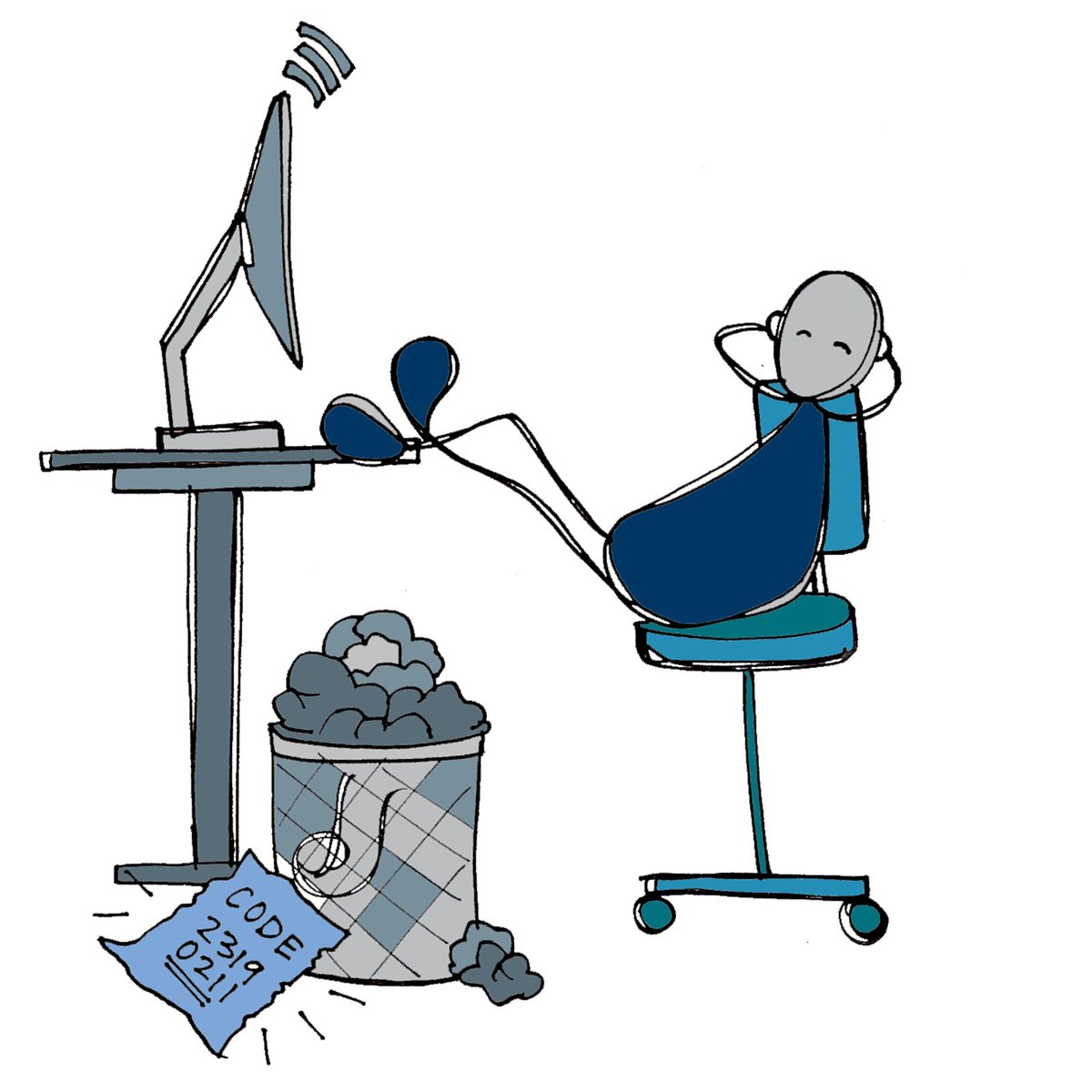
#SmartCustody is an ongoing project of @BlockchainComns, a blockchain infrastructure support organization. In it we share the best practices for the use of advanced cryptographic tools in improving the care, maintenance, control, and protection of your digital assets. (1/14) 

In the 1st edition of #SmartCustody we detail best practices & default storage scenarios, offer an exercise for you to learn how to model digital asset flows, create a risk model, do an adversarial analysis, and use these tools to modify your personal storage scenario. (2/14)
These resources, paid for by your fellow patrons in the Bitcoin and cryptocurrency digital-asset community, are available for free in the PDF bit.ly/SmartCustodyBo… and at cost in a print-on-demand book bit.ly/SmartCustodyBo… (3/14)
In the year since the release of our #SmartCustody digital-asset checklists, resources, and risk modeling there have been many changes to our ecosystem. For example, last year's edition could only safely recommend single-signature cold storage approaches for self-custody. (4/14)
However, a number of wallets' architectures have since become more mature. So we now feel that multi-sig solutions are feasible for use by regular people. (5/14)
As @BlockchainComns begins work on a major new release of a 2nd edition #SmartCustody, I thought I’d share with you personally some of my own thoughts on how I think about digital asset security, risk modeling, and adversarial analysis. (6/14)
The first thing I'd like to share is particularly unique to how I approach the risk-modelling of digital assets: Adversarial Analaysis. I believe you may find it useful, so I'll be sharing my thoughts about these Adversaries throughout the month of June. (7/14)
Classic risk-modeling techniques can be overwhelming, so the #SmartCustody book offers a different approach that helps users to protect their digital assets by figuring out what endangers them. I do this using a unique method: exposing ADVERSARIES. (8/14)
Classic risk-modeling indentifies vulnerabilities and turns those vulnerabilities into risks based on likelihoods and consequences. You'll still find all of that in #SmartCustody. It's only after we've identified these initial risks that we bring in our adversaries. (9/14)
So what's an adversary? It's an anthropomorphized problem. Each one can encompass many different risks and have many different solutions. Losing your funds due to incapacitation is a potential risk, but DEATH, that's an adversary. (10/14)
Why adversaries? Because they flip the script. We go from discussing somewhat vague and abstract vulnerabilities to considering something more concrete. In the abstract, we might fall prey to our own biases; when things are made concrete, we hew closer to reality. (11/14)
We can look at the motives of Death or Institutional Theft or Blackmail. We can consider what they want, even in situations when they're not thinking beings. By better considering motives, we can better understand if an adversary is actually a threat to *US*. (12/14)
Risk modeling is all about making informed decisions rather than emotional ones. I believe that adversaries help us to do so. I'll be talking more about them in coming days, as I highlight the 27 adversaries in #SmartCustody. (13/14)
What do you think of adversaries? Are they useful for modeling risks? Let us know! And please consider supporting the #SmartCustodywork that this topic is drawn from. We're need support for our 2nd edition, with multi-sigs and other expansions: …tcustody.btcpay.blockchaincommons.com (14/14)
Adversary category "Loss by Actions of God"
https://twitter.com/christophera/status/1267859439408697344?s=21https://t.co/gxkcQmoNVd
Our first adversary in the category “Loss by Actions of God” — Death/Incapacitation:
https://twitter.com/christophera/status/1268401649728368640?s=21https://t.co/uyidASDMsm
The second #SmartCustody adversary in the category of “Loss by Actions of God” — Denial of Access:
https://twitter.com/christophera/status/1268531178916569088?s=21https://t.co/l1mAZsJIc2
Our third #SmartCustody adversary, our last in the category of “Loss by Actions of God" — Disaster:
https://twitter.com/christophera/status/1268838617012568065?s=21https://t.co/Q58DjE9kG2
Our second major #SmartCustody adversary category is “Loss by Computer Error”:
https://twitter.com/ChristopherA/status/1269425280008876032?s=20https://t.co/Rhf9nn5wsW
Our first #SmartCustody adversary in the category "Loss by Computer Error" is Bitrot:
https://twitter.com/ChristopherA/status/1270034533270745095?s=20
Our second and last #SmartCustody adversary in the category “Loss by Computer Error" is Systemic Key Compromise:
https://twitter.com/ChristopherA/status/1270438677940846592?s=20https://t.co/QMPsikuTMT
Our next category of adversaries are “Loss by Crime, Theft”:
https://twitter.com/ChristopherA/status/1270774037782777856?s=20https://t.co/wWDNj2piS1
Our first #SmartCustody adversary in the category of “Loss by Crime, Theft" is INSTITUTIONAL THEFT:
https://twitter.com/ChristopherA/status/1271172504787116032?s=20https://t.co/t2ZbIqbdQC
Our next #SmartCustody adversary in the category of “Loss by Crime, Theft" is INTERNAL THEMFT:
https://twitter.com/christophera/status/1271474884497965056?s=21https://t.co/xY8xFXfC83
The PERSONAL NETWORK ATTACK is our next adversary in the “Loss by Crime, Theft” category:
https://twitter.com/christophera/status/1272624127719829504?s=21https://t.co/o8JINmjiqk
The SYSTEMIC NETWORK ATTACK is our next adversary in the "Loss by Crime, Theft" category:
https://twitter.com/christophera/status/1272955016710549504?s=21
CASUAL PHYSICAL THEFT is the next #SmartCustody adversary in the category of "Loss by Crime, Theft":
https://twitter.com/christophera/status/1273363574295937024?s=21
Our next #SmartCustody adversary in the category "Loss by Crime, Theft" is SOPHISTICATED PHYSICAL THEFT:
https://twitter.com/christophera/status/1273671203832492033?s=21
Today's #SmartCustody adversary in the category "Loss by Crime, Theft" is SOCIAL ENGINEERING
https://twitter.com/ChristopherA/status/1274067538637291520?s=20
Our last #SmartCustody adversary in the category "Loss by Crime, Theft" is SUPPLY-CHAIN THEFT:
https://twitter.com/christophera/status/1275143980389265408?s=21
Our next category of #SmartCustody adversaries is "Loss by Crime, Other":
https://twitter.com/christophera/status/1275535534866104322?s=21
Our first #SmartCustody adversary in the category of "Loss by Crime, Other" is BLACKMAIL:
https://twitter.com/christophera/status/1275901766081507329?s=21
The next #SmartCustody adversary in the category of "Loss by Crime, Other" is COERCION:
https://twitter.com/christophera/status/1276218207909511169?s=21
Another #SmartCustody adversary in the category of "Loss by Crime, Other" is the NON-FINANCIALLY MOTIVATED ATTACKER:
https://twitter.com/christophera/status/1276569133165903872?s=21
Our last #SmartCustody adversary in the category of "Loss by Crime, Other" is TERRORISM / MOB:
https://twitter.com/christophera/status/1277710396778885120?s=21
Our next category of #SmartCustody adversaries is "Loss by Government":
https://twitter.com/christophera/status/1278058733868773376?s=21
The first #SmartCustody adversary in category “Loss by Government" is LEGAL FORFEITURE:
https://twitter.com/christophera/status/1278455292280270855?s=21https://t.co/sP6vJeZnTA
Our last #SmartCustody adversary in the category "Loss by Government" is NATION-STATE ACTOR:
https://twitter.com/christophera/status/1278796622978150400?s=21
Our next category of #SmartCustody adversaries is “Loss by Mistakes”:
https://twitter.com/christophera/status/1279165294095695872?s=21https://t.co/Vqa4bH7fMN
Our first #SmartCustody adversary in the category of "Loss by Mistakes" is CONVENIENCE:
https://twitter.com/christophera/status/1280230853117804545?s=21https://t.co/uNaoB6JWxU
Our next #SmartCustody adversary in the category of “Loss by Mistakes” is KEY FRAGILITY:
https://twitter.com/christophera/status/1280623626287341568?s=21https://t.co/GMOH9v0tKx
Our next #SmartCustody adversary in the category of "Loss by Mistakes" is PROCESS FATIGUE:
https://twitter.com/christophera/status/1280953891006197760?s=21https://t.co/oQZiP4052l
Another #SmartCustody adversary in the category of "Loss by Mistakes" is TRANSACTION ERROR:
https://twitter.com/christophera/status/1281291296645058560?s=21https://t.co/ckp4jjRE4x
Our last #SmartCustody adversary in the category of “Loss by Mistakes" is USER ERROR:
https://twitter.com/christophera/status/1281668262502166534?s=21https://t.co/qcfbWLSDuN
Our last category of #SmartCustody adversaries (and our last week of this series) is Privacy-Related Problems:
https://twitter.com/christophera/status/1282736099983388672?s=21https://t.co/91u2b40OZ9
Our first #SmartCustody adversary in the category of “Privacy-Related Problems" is CORRELATION:
https://twitter.com/christophera/status/1283124120444481537?s=21https://t.co/V1nbmo6DKB
Our next #SmartCustody adversary in the category of “Privacy-Related Problems" is CENSORSHIP:
https://twitter.com/christophera/status/1283539387016519681?s=21https://t.co/PTj0hellul
Our last #SmartCustody adversary in the cateogy for “Privacy-Related Problems" is LOSS OF FUNGIBILITY:
https://twitter.com/christophera/status/1283837467552972801?s=21https://t.co/3vcoi1RwmY
We conclude this series of tweet storms to ask for your help in making V2 of #SmartCustody possible, and to help in our broader mission to support open blockchain infrastructure, internet security, the open web, digital civil liberties, and more.
https://twitter.com/christophera/status/1284213839337189377?s=21https://t.co/pw38HVNb9B
• • •
Missing some Tweet in this thread? You can try to
force a refresh










